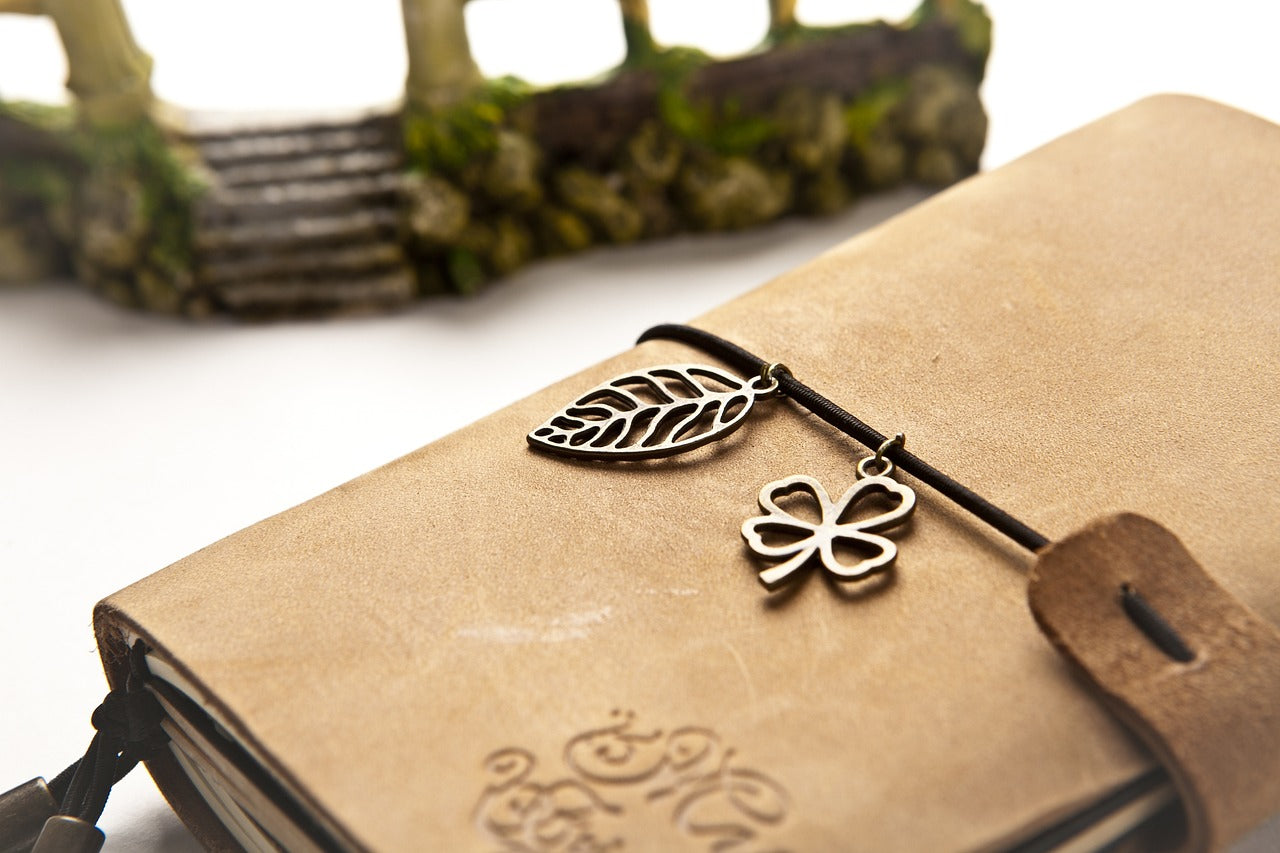Monogram leather art is a timeless and sophisticated craft that allows individuals to personalize their leather goods with custom initials, unique designs, and creative elements. Whether you're looking to add a personal touch to a wallet, bag, or any other leather item, monogramming offers endless possibilities for customization.
In this guide, we will explore the various aspects of monogram leather art, from selecting the right materials to mastering different techniques. By the end of this article, you will have all the knowledge you need to create stunning and durable monogram designs on leather.

Introduction to Monogram Leather Art
Monogramming leather is an art form that has been practiced for centuries. Originally, monograms were used to signify ownership and status, often appearing on items belonging to royalty and nobility. Today, monogramming has evolved into a popular way to add a personal and stylish touch to everyday leather goods.
Monogram leather art involves the process of engraving, embossing, or painting initials, logos, or designs onto leather surfaces. This customization can transform a simple leather item into a cherished and unique piece, making it an excellent option for gifts, personal use, or even as a form of artistic expression.
Benefits of Personalizing Leather Items
Personalizing leather items with monograms offers several benefits:
- Uniqueness: A monogrammed leather item is one-of-a-kind, reflecting the owner's personality and style.
- Sentimental Value: Personalized leather goods make thoughtful and memorable gifts, often becoming treasured keepsakes.
- Branding: For businesses, monogramming leather products can serve as a form of branding, adding a professional and elegant touch to their offerings.
- Enhanced Aesthetics: A well-crafted monogram can elevate the visual appeal of a leather item, adding depth and texture to its design.
Essential Materials and Tools
The success of your monogram leather art largely depends on the type of leather you choose. Here are some of the best options for monogramming:
- Full-Grain Leather: This is the highest quality leather, known for its durability and natural appearance. It is ideal for embossing and engraving as it can hold intricate details well.
- Top-Grain Leather: Slightly less durable than full-grain, top-grain leather is still an excellent choice for monogramming. It has a smooth finish that is perfect for clean and precise designs.
- Vegetable-Tanned Leather: This type of leather is treated with natural tannins, making it eco-friendly and suitable for various monogramming techniques. It ages beautifully, developing a unique patina over time.
- Suede and Nubuck: While more delicate, these leathers can be monogrammed with care. They work well with painting techniques and certain embossing methods.
Necessary Tools for Embossing, Debossing, and Painting
To create professional-looking monogram designs, you'll need the right tools. Here’s a list of essential tools for different monogramming techniques:
- Embossing Tools:
- Brass or Steel Stamps: These are used to create raised designs on leather by applying pressure.
- Heat Embossing Tool: A device that heats the stamp to ensure a clean and lasting impression.
- Press Machine: For more consistent and deeper embossing, especially for larger projects.
- Debossing Tools:
- Debossing Stamps: Similar to embossing stamps but designed to create recessed designs.
- Hammer and Mallet: Used to apply pressure to the stamp manually.
- Engraving Tools:
- Laser Engraver: A precision tool that can etch intricate designs onto leather surfaces.
- Handheld Engraving Pen: For smaller, more detailed work.
- Painting Tools:
- Leather Paints: Specially formulated paints that adhere well to leather without cracking.
- Brushes and Sponges: For applying paint in different styles, from detailed brushwork to broader strokes.
- Stencils: Useful for achieving consistent and precise monogram designs.

Preparing the Leather
Before diving into the monogramming process, it’s essential to properly prepare your leather. This preparation ensures that your design will be clean, crisp, and long-lasting. Here’s a step-by-step guide to getting your leather ready for monogramming:
- Cleaning the Leather: Start by wiping the leather surface with a damp cloth to remove any dust, dirt, or oils that could interfere with the monogramming process. If the leather is particularly dirty, use a mild leather cleaner. Make sure to let the leather dry completely before moving on to the next step.
- Conditioning the Leather: Leather, especially older or dry pieces, may need conditioning to make it more pliable and receptive to embossing, debossing, or engraving. Apply a high-quality leather conditioner evenly across the surface and allow it to soak in. This step not only softens the leather but also prevents it from cracking during the monogramming process.
- Dampening the Leather: For techniques like embossing and debossing, lightly dampen the leather with a sponge or cloth. The moisture makes the leather more flexible, allowing it to better take on the shape of the embossing or debossing tools. Be careful not to over-saturate the leather, as too much moisture can lead to unwanted stretching or distortion.
- Marking the Design Area: Before you begin, use a pencil or chalk to lightly mark the area where the monogram will be placed. This ensures that your design is centered and aligned properly. If you’re using a stencil, now is the time to secure it in place with some tape.
By following these preparatory steps, you set the foundation for a successful monogramming process that will yield professional and durable results.
Techniques for Monogramming Leather
Monogramming leather can be done through several techniques, each offering a unique style. The primary methods are embossing, debossing, and engraving, with each providing different effects and applications. Additionally, painting can be used to add vibrant color to your designs.
Exploring Different Techniques: Embossing, Debossing, and Engraving
- Embossing: This technique raises the design on the leather surface by pressing a heated stamp into the material. It's ideal for bold, tactile monograms that are easy to see and feel, making it great for items like wallets and belts.
- Debossing: The opposite of embossing, debossing creates a recessed design by pressing the stamp into the leather, leaving a subtle and elegant impression. It works well for more understated, minimalist designs on softer leathers.
- Engraving: Engraving cuts into the leather’s surface, either manually or with a laser, to create precise, detailed designs. This method is perfect for intricate patterns and logos, offering a high level of customization.
Guide to Painting Monograms for Colorful and Vibrant Finishes
Adding paint to monograms can make your designs more colorful and expressive:
- Selecting Paint: Use durable, flexible leather paints like Angelus Leather Paints, which resist cracking and adhere well to leather.
- Preparing the Leather: Ensure the leather is clean and dry. Apply a white base coat on dark leather to make colors stand out.
- Applying Paint: Use fine brushes for detail and layer the paint thinly, allowing each coat to dry to prevent cracking. Stencils can help with consistency.
- Sealing the Paint: Once dry, apply a sealer to protect the design and enhance color vibrancy, giving the monogram a polished look.
- Creative Touches: Experiment with color blending, metallic accents, and techniques like sponging or stippling for unique textures.
Mastering these techniques will allow you to create stunning, personalized leather items that reflect your style. Each method offers distinct advantages, and by combining them, you can achieve a wide range of artistic effects.

Advanced Techniques and Creative Ideas
Combining different monogramming techniques can elevate your leather projects to new levels of creativity. For example, you can start by embossing a monogram onto leather and then painting over the raised design for added color and texture. This combination creates a visually striking and tactile design. Alternatively, you could engrave intricate details within a debossed monogram to add depth and complexity. Mixing these techniques allows for endless customization options, ensuring your leather items are truly unique.
Creative Design Ideas Extending Beyond Simple Initials
Monogramming isn't limited to just initials. You can explore creative designs such as incorporating logos, symbols, or motifs that resonate with personal or brand identity. For instance, integrating floral patterns around a monogram can add an elegant touch, or using geometric shapes can give a modern and artistic flair. These designs can be as simple or as complex as you desire, making your leather items not just functional but also works of art.
Finishing Touches
To ensure your monogrammed design remains vibrant and durable, follow these best practices:
- Coloring: Apply multiple thin layers of paint, allowing each layer to dry fully before adding the next. This technique helps prevent cracking and ensures a smooth finish.
- Sealing: After painting, use a high-quality leather sealer to protect the design from wear and tear. A sealer also enhances the color, giving your monogram a professional-looking finish.
Tips for Achieving a Professional Finish on Monogrammed Leather
Achieving a polished, professional finish involves attention to detail:
- Smooth Edges: After embossing or engraving, use a burnishing tool to smooth the edges of the design, which adds to the overall polished look.
- Buffing: Once the leather is sealed, buff the surface with a soft cloth to enhance the natural sheen and make the monogram stand out.
Care and Maintenance of Monogrammed Leather
Proper care is crucial to maintain the beauty and functionality of your monogrammed leather items:
- Regular Cleaning: Wipe the leather with a soft, damp cloth to remove dirt and dust. For deeper cleaning, use a leather-specific cleaner.
- Conditioning: Periodically apply a leather conditioner to keep the leather soft and prevent it from drying out or cracking.
- Storage: Store leather items in a cool, dry place away from direct sunlight to prevent fading and warping. Avoid storing in plastic bags, as they can trap moisture.
By following these tips, your monogrammed leather items will retain their beauty and durability for years to come.

Monogram leather art is a rewarding and creative craft that allows you to add a personal touch to your leather items. Whether you choose to emboss, deboss, engrave, or paint your designs, the possibilities are endless. With the right materials, tools, and techniques, you can transform ordinary leather goods into unique, custom pieces that reflect your style and creativity.
The art of monogramming not only enhances the aesthetic appeal of leather but also imbues your creations with lasting sentimental value.
If you're new to this craft, don't hesitate to experiment and explore different techniques. The more you practice, the more skilled you'll become, and soon you'll be creating professional-quality monograms with ease.
So gather your tools, select your leather, and start crafting your own monogrammed masterpieces today. For more inspiration and high-quality leather products, you can visit Angelus Direct to find the supplies you need to bring your monogram leather art to life.
FAQs
1. What is the best type of leather for monogramming?
Full-grain leather is often considered the best for monogramming due to its durability and ability to hold detailed designs. Top-grain leather and vegetable-tanned leather are also excellent choices, offering a good balance between quality and ease of use.
2. Can I paint over an embossed monogram?
Yes, painting over an embossed monogram is a great way to add color and depth to your design. Use leather-specific paints like those from Angelus Direct, which offer high-quality, flexible finishes that prevent cracking. Remember to seal the paint with a leather sealer for added protection and longevity.
3. How do I care for my monogrammed leather items?
To maintain the quality of your monogrammed leather items, regularly clean them with a damp cloth and condition the leather to keep it supple. Avoid exposure to direct sunlight and extreme temperatures, and store your items in a cool, dry place. Proper care will help your monogrammed designs last for years.
4. Can I engrave leather at home, or do I need professional equipment?
You can engrave leather at home using a handheld engraving tool or a laser engraver. While professional equipment like laser engravers offers more precision and is ideal for detailed designs, handheld tools can also produce excellent results for simpler monograms.

